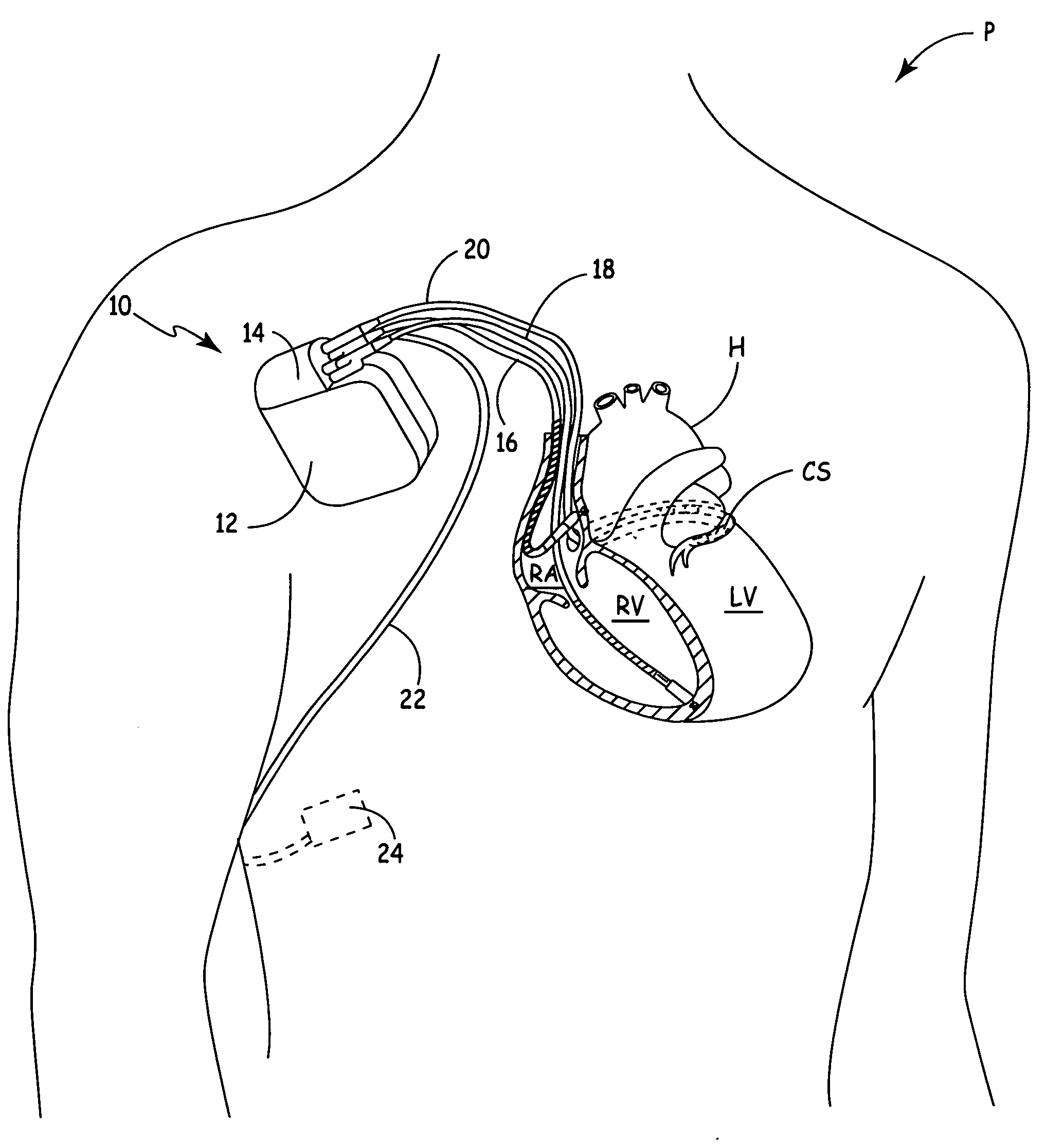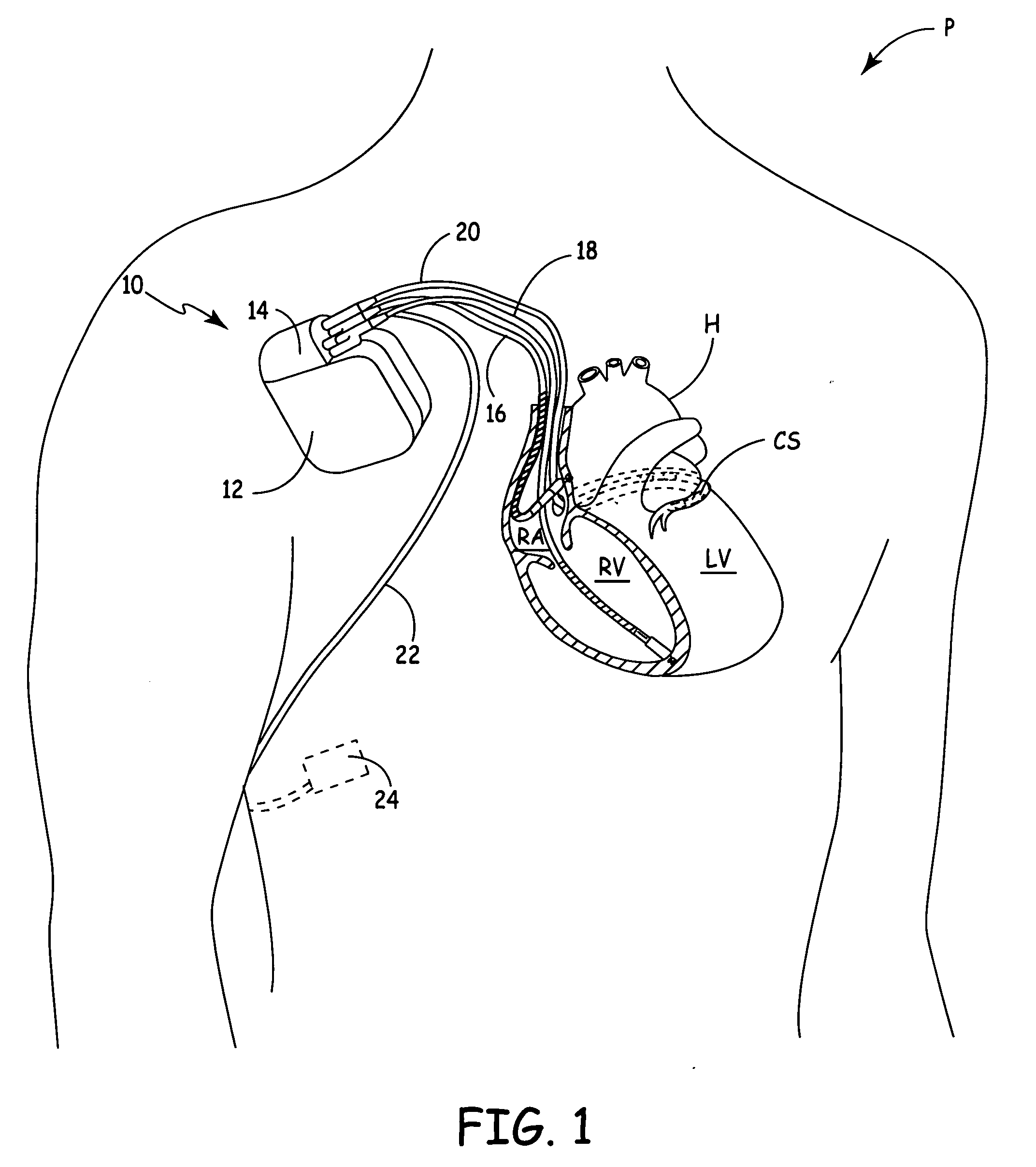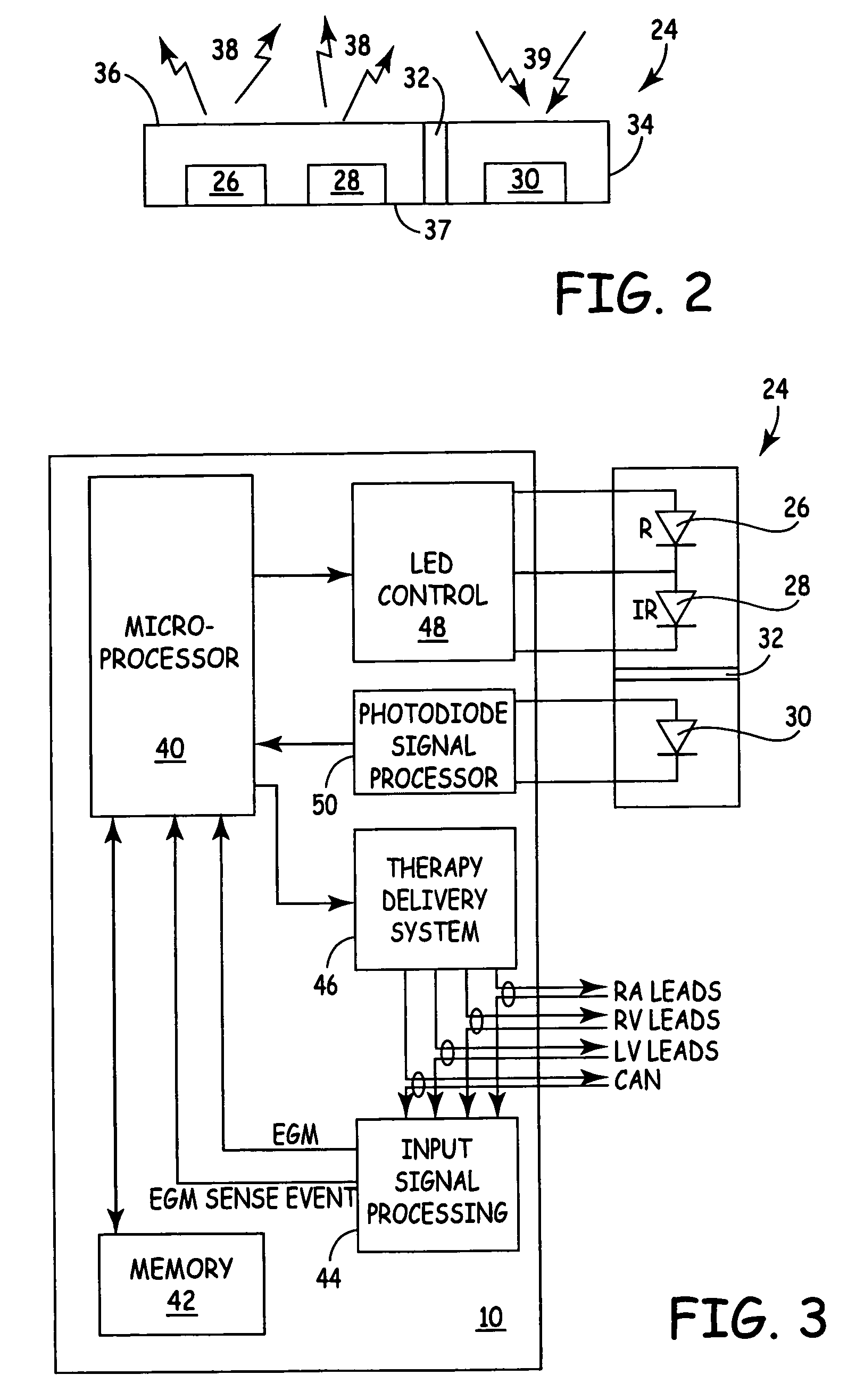Method and apparatus for using an optical hemodynamic sensor to identify an unstable arrhythmia
a hemodynamic sensor and optical technology, applied in the field of medical devices, can solve the problems of limited practical applications of optical hemodynamic sensors, significant noise, and inability to detect unstable arrhythmias
- Summary
- Abstract
- Description
- Claims
- Application Information
AI Technical Summary
Problems solved by technology
Method used
Image
Examples
Embodiment Construction
[0012] The present invention is directed toward a medical device, such as a cardioverter defibrillator, a pacemaker, or a cardiac monitor, that identifies a hemodynamically unstable arrhythmia based upon signals obtained from an optical hemodynamic sensor. Of interest here, in particular, are sensors capable of transmitting two or more wavelengths of light through a portion of a patient's blood perfused tissue, of receiving the transmitted signals as attenuated by transmission through the tissue, and of generating, for each transmitted wavelength, signals proportional, either directly or inversely, to an intensity of the received signals. The medical device of the present invention includes a processor for analyzing the generated signals to determine whether the signals may have been corrupted by motion. If the processor determines that motion is not a problem, the controller further analyzes the signals to determine if a state exists that is consistent with hemodynamic instability....
PUM
 Login to View More
Login to View More Abstract
Description
Claims
Application Information
 Login to View More
Login to View More - R&D
- Intellectual Property
- Life Sciences
- Materials
- Tech Scout
- Unparalleled Data Quality
- Higher Quality Content
- 60% Fewer Hallucinations
Browse by: Latest US Patents, China's latest patents, Technical Efficacy Thesaurus, Application Domain, Technology Topic, Popular Technical Reports.
© 2025 PatSnap. All rights reserved.Legal|Privacy policy|Modern Slavery Act Transparency Statement|Sitemap|About US| Contact US: help@patsnap.com



